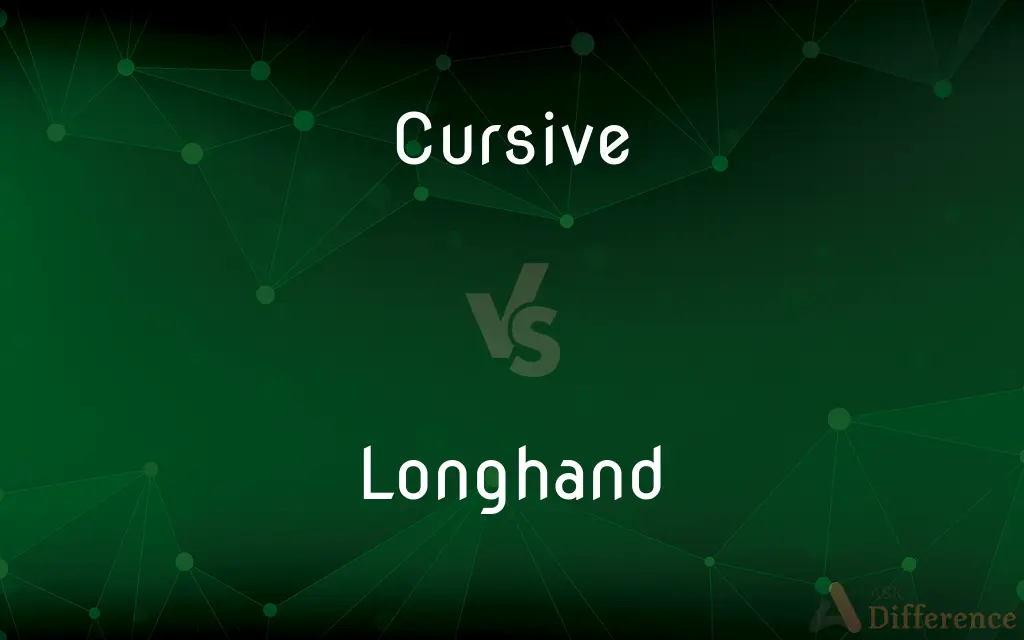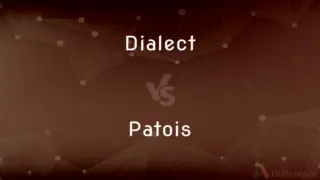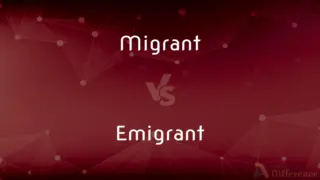Cursive vs. Longhand — What's the Difference?
By Tayyaba Rehman & Urooj Arif — Updated on March 21, 2024
Cursive writing is a style of penmanship where letters are connected for faster writing, while longhand refers to standard handwritten letters, whether in cursive or print form.

Difference Between Cursive and Longhand
Table of Contents
ADVERTISEMENT
Key Differences
Cursive writing is characterized by flowing, connected letters, designed to improve writing speed and efficiency. This style is often taught in schools as a way to develop fine motor skills and a personal writing style. In contrast, longhand is a broader term that encompasses any form of handwriting, including both cursive and print styles. Longhand simply refers to the act of writing by hand as opposed to typing or printing text with a machine.
While cursive writing aims for speed and fluidity, allowing writers to lift their pens less frequently, longhand focuses on clarity and legibility, without specific emphasis on the connections between letters. Cursive can be seen as a subset of longhand writing, where the main goal is to produce text through manual means.
The use of cursive versus print styles in longhand writing often depends on personal preference, the context in which the writing is being done, and the intended reader. For example, formal documents or situations may call for clear, printed longhand to ensure readability, while personal notes or faster writing may utilize cursive.
Learning cursive is also associated with cognitive benefits, such as improved hand-eye coordination and enhanced comprehension and creativity. However, in the digital age, the emphasis on learning and using cursive writing has declined, with more focus on typing and digital literacy skills. Nonetheless, both forms of longhand writing, cursive and print, remain important for personal expression and communication.
Cursive is a specific style of longhand writing known for its connected letters and speed, while longhand encompasses all forms of handwriting, serving as a fundamental skill for written communication and expression.
ADVERTISEMENT
Comparison Chart
Definition
Style with flowing, connected letters
Handwritten text, including cursive and print
Purpose
Increase writing speed, fluidity
Manual text production, clarity, legibility
Letter Connection
Letters are connected
Letters may be connected or disconnected
Emphasis
Speed and efficiency
Clarity and legibility
Learning Benefits
Improves fine motor skills, comprehension
Enhances manual writing skills, personal expression
Compare with Definitions
Cursive
A handwriting style with connected letters.
She wrote her name in elegant cursive.
Longhand
Includes both cursive and print styles.
His longhand writing alternated between cursive and print.
Cursive
Often used for personal notes or informal writing.
She prefers cursive for her daily journaling.
Longhand
Any form of handwritten text.
The letter was written in neat longhand.
Cursive
Designed for efficient, fast writing.
Cursive writing is often faster than print for taking notes.
Longhand
Can reflect personal style and expression.
Her longhand writing was unique and easily recognizable.
Cursive
May include variations unique to the writer.
His cursive included distinctive loops on his 'y's and 'g's.
Longhand
Fundamental for written communication.
Despite the digital age, longhand writing remains an essential skill.
Cursive
Taught for its cognitive and motor benefits.
Learning cursive has been linked to improved hand-eye coordination.
Longhand
Focuses on legibility and clarity.
Legal documents are usually written in clear longhand.
Cursive
Cursive (also known as script, among other names) is any style of penmanship in which some characters are written joined together in a flowing manner, generally for the purpose of making writing faster, in contrast to block letters. Cursive handwriting is very functional, and is intended to be used in everyday writing.
Longhand
Cursive writing.
Cursive
Having the successive letters joined together
Cursive writing.
A cursive style of type.
Longhand
The written characters used in the common method of writing; opposed to shorthand, or typing or printing; handwriting.
Cursive
A cursive character or letter.
Longhand
Written by hand in normal characters, as opposed to shorthand.
Cursive
A manuscript written in cursive characters.
Longhand
Written by hand (with pen or pencil), rather than printed out; handwritten.
I had to write the essay out twice longhand – they wouldn’t let me print it out. It took forever!
Cursive
(Printing) A type style that imitates handwriting.
Longhand
The written characters used in the common method of writing; - opposed to shorthand; as, took it down in longhand.
Cursive
Running; flowing.
Longhand
Rapid handwriting in which letters are set down in full and cursively connected within words without lifting the writing implement from the paper
Cursive
(of writing) Having successive letters joined together.
Longhand
Having words written out in full by hand;
Longhand writing
Cursive
(grammar) Of or relating to a grammatical aspect relating to an action that occurs in a straight line (in space or time).
Cursive
(countable) A cursive character, letter or font.
Cursive
(countable) A manuscript written in cursive characters.
Cursive
(uncountable) Joined-up handwriting.
Cursive
Running; flowing.
Cursive
A character used in cursive writing.
Cursive
A manuscript, especially of the New Testament, written in small, connected characters or in a running hand; - opposed to uncial.
Cursive
Rapid handwriting in which letters are set down in full and cursively connected within words without lifting the writing implement from the paper
Cursive
Having successive letter joined together;
Cursive script
Common Curiosities
What is the main difference between cursive and longhand writing?
Cursive writing specifically refers to a style with connected letters for faster writing, while longhand encompasses all forms of handwriting, including both cursive and print.
Why learn cursive writing in the digital age?
Learning cursive offers cognitive and motor benefits, such as improved hand-eye coordination, and can enhance comprehension and creativity.
Can longhand writing be in print form?
Yes, longhand writing includes both cursive and print styles, focusing on manual text production.
Why is legibility important in longhand writing?
Legibility is crucial for ensuring that the written text can be easily read and understood by others, particularly in formal or professional contexts.
Is cursive writing faster than print?
Generally, cursive is faster than print due to the connected letters, which reduce the need to lift the pen as often.
How does writing style affect personal expression?
Writing style, whether cursive or print, reflects individual personality and can convey mood, emphasis, and personal flair.
Are digital writing tools replacing longhand writing?
While digital tools have become prevalent, longhand writing remains important for personal notes, education, and situations where digital devices are impractical.
What are the benefits of teaching longhand writing to children?
Teaching longhand writing to children improves manual dexterity, cognitive development, and lays the foundation for effective written communication.
Can someone use both cursive and print in their longhand writing?
Yes, individuals may mix cursive and print styles in their longhand writing based on preference, context, and the intended reader's needs.
How has the role of cursive and longhand writing changed over time?
The role of cursive and longhand writing has evolved with technology, shifting from essential communication tools to skills valued for personal expression and cognitive development.
Share Your Discovery

Previous Comparison
Dialect vs. Patois
Next Comparison
Migrant vs. EmigrantAuthor Spotlight
Written by
Tayyaba RehmanTayyaba Rehman is a distinguished writer, currently serving as a primary contributor to askdifference.com. As a researcher in semantics and etymology, Tayyaba's passion for the complexity of languages and their distinctions has found a perfect home on the platform. Tayyaba delves into the intricacies of language, distinguishing between commonly confused words and phrases, thereby providing clarity for readers worldwide.
Co-written by
Urooj ArifUrooj is a skilled content writer at Ask Difference, known for her exceptional ability to simplify complex topics into engaging and informative content. With a passion for research and a flair for clear, concise writing, she consistently delivers articles that resonate with our diverse audience.















































